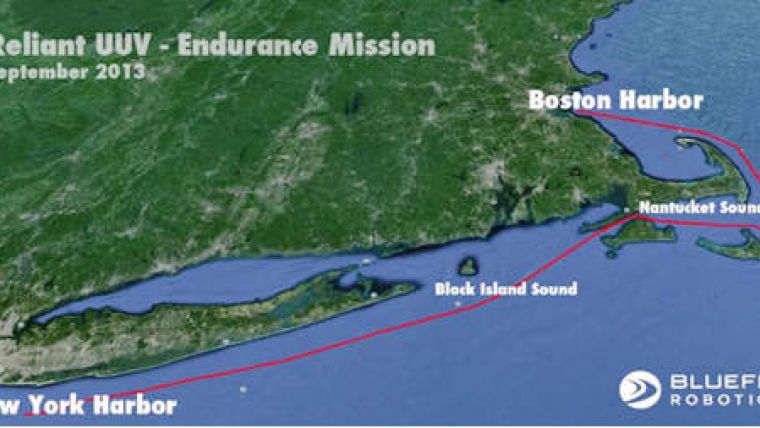Long-endurance UUV Mission Completed
Bluefin Robotics, (USA), in support of the Naval Research Laboratory (NRL, USA), has successfully completed a long-endurance UUV mission from Boston to New York totalling over 100 hours with NRL's Reliant Heavyweight UUV. The multi-day mission exercised UUV autonomy methods and demonstrated the capability of a high-capacity energy configuration. The test was designed to push the boundaries of traditional UUVs with the objective to uncover the challenges and requirements for significantly extending UUV endurance for new applications.
The exercise is part of a series to support NRL's research in UUV-based technology for the US Navy.
Reliant is an advanced version of the Bluefin-21 vehicle and, when equipped with a Low Frequency Broadband (LFBB) sonar payload, is the prototype SMCM UUV Knifefish system for the US Navy. The vehicle navigates using a fiber-optic gyro-based INS along with supplemental data from a GPS and a Doppler Velocity Log (DVL) to enable precise navigation underwater for long endurance missions. Reliant utilises Bluefin's modular vehicle design that enabled the team to easily remove the payload section and add additional energy sections increasing the system's energy capacity to nearly 40kWh of power. Configuration took place over only a few days at Bluefin's headquarters in Quincy, USA.
The team mobilised the vehicle on the Boston Harbour Cruise's, M/V Matthew J. Hughes, and deployed it outside Boston Harbour. To optimise for endurance and range, the vehicle travelled at an average speed of 2.5 knots at 10 metres water depth, resurfacing every 20 kilometres for navigation updates over GPS. Team members on M/V Matthew J. Hughes and onshore were able to receive vehicle status information over Iridium satellite system. While the support vessel was available, it did not provide navigational updates to the UUV, leaving the system to travel completely autonomously. After 109 hours of operation and transiting over 500 kilometres through strong currents, the system successfully reached its end point in New York Harbor with 10% of its battery life remaining.
The overall effort was funded by the Office of Naval Research.














